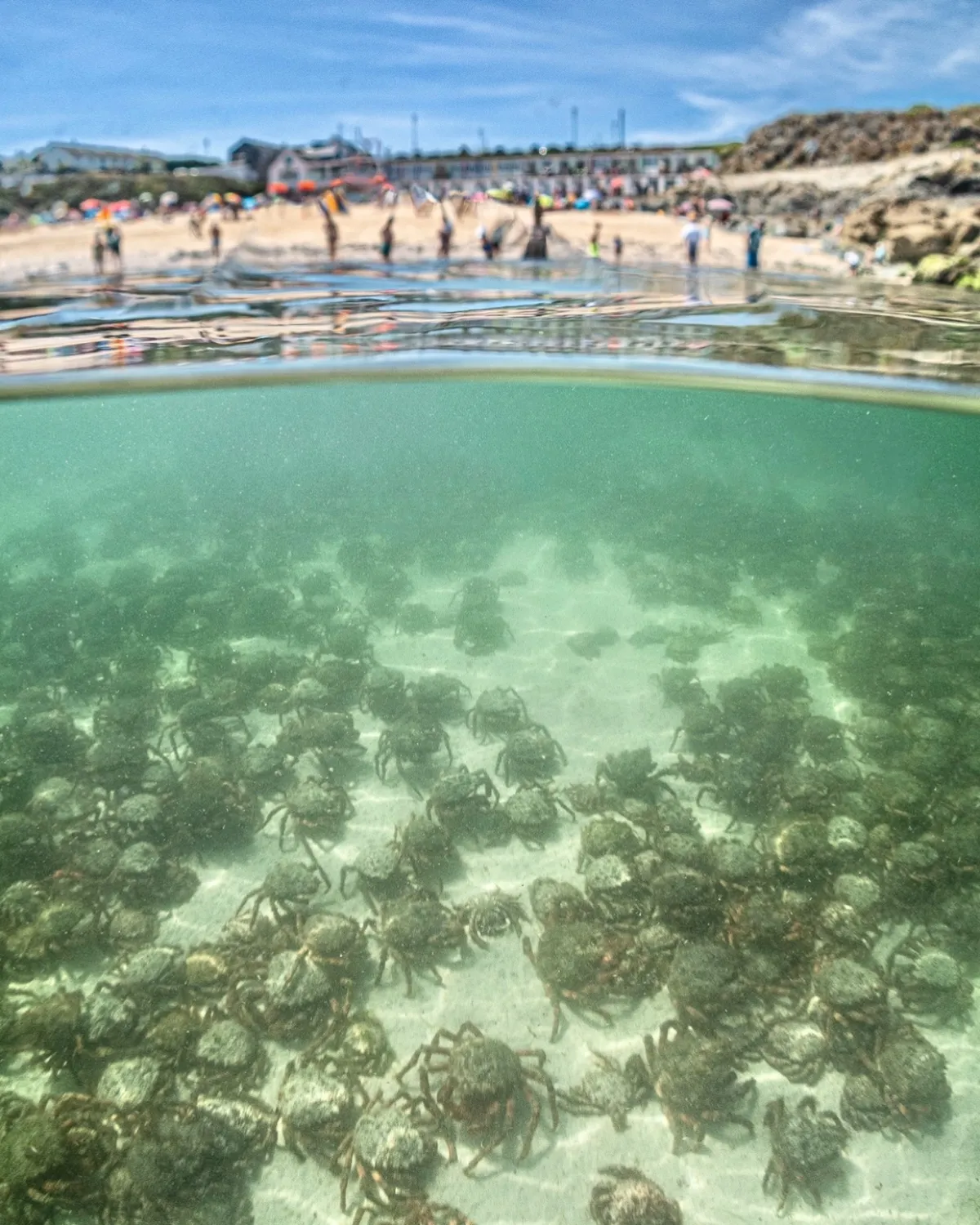In the UK, over the weekend of 6-7 August 2022, thousands of spider crabs appeared close to the shore in St Ives, Cornwall.
Common spider crabs, also known as spiny spider crabs (Maja brachydactyla), live along the East Atlantic coast from the British Isles in the north to West Africa in the south.
They are large, orange-coloured crustaceans, with long, spindly, spider-like legs. They are often covered in algae, sponges and other bits and bobs, giving them a slightly fluffy look.
Juvenile spider crabs live in the shallows, before moving offshore into deeper water as adults. They can be found on rocky, sandy or muddy substrates to a depth of more than 100 metres.
Find out more about crabs:
- What is a coconut crab?
- Why do crabs walk sideways?
- Instant Genius Podcast: The science of crabs, with Peter Davie
Mature crabs will undertake a summer migration into shallower waters in order to moult their tough exoskeletons. During these migrations, they can be seen in huge accumulations of thousands of individual crabs.
It is believed that this strategy allows for ‘safety in numbers’. The crabs on the outside of the gatherings still have their tough shells, while the crabs on the inside have softer shells from just starting or finishing their moulting. The texture of the crab at this time is a bit like a hard-boiled egg, making them particularly vulnerable to predators. It is also at this point that the males will grab the opportunity to mate with the still-soft females.
It was one of these enormous gatherings that was witnessed in Cornwall, just metres from the beach.
Are spider crabs venomous?
Many media outlets referred to the spider crabs as ‘venomous’, with gripping headlines such as, “Tourists warned as thousands of venomous spider crabs swarm at Cornwall beach” and “Horror warning for UK beachgoers as thousands of venomous spider crabs swarm beaches”.
There is no doubt that such headlines capture the attention of the public, but they are highly misleading and can be hugely damaging to perceptions of the marine world. Spider crabs are not venomous. No species of crab, lobster or shrimp has venom. In fact, the only recorded venomous crustacean is a cave-dwelling species of remipede.
"These aggregations are truly magnificent sights, and people should be encouraged to go and see them, especially when they are so accessible and close to shore," says Tom 'The Blowfish' Hird, marine biologist and broadcaster, and author of Blowfish's Oceanopedia. "Misconceptions about the oceans can harm an environment that right now needs our protection and affection."

While common spider crabs are not insignificant in size, with a carapace length (so that’s the ‘body’ of the crabs, minus the legs) of up to 20 centimetres, they pose no threat to humans. They are not particularly fussy eaters, and will scavenge on the seabed for algae and invertebrates, which they’ll break up and manipulate with their claws to make them easier to eat.
According to Cornwall Wildlife Trust, these spider crab aggregations used to be pretty rare in the UK, and this summer has been particularly impressive. The Cornwall Wildlife Trust encourages the public to report their sightings online.
